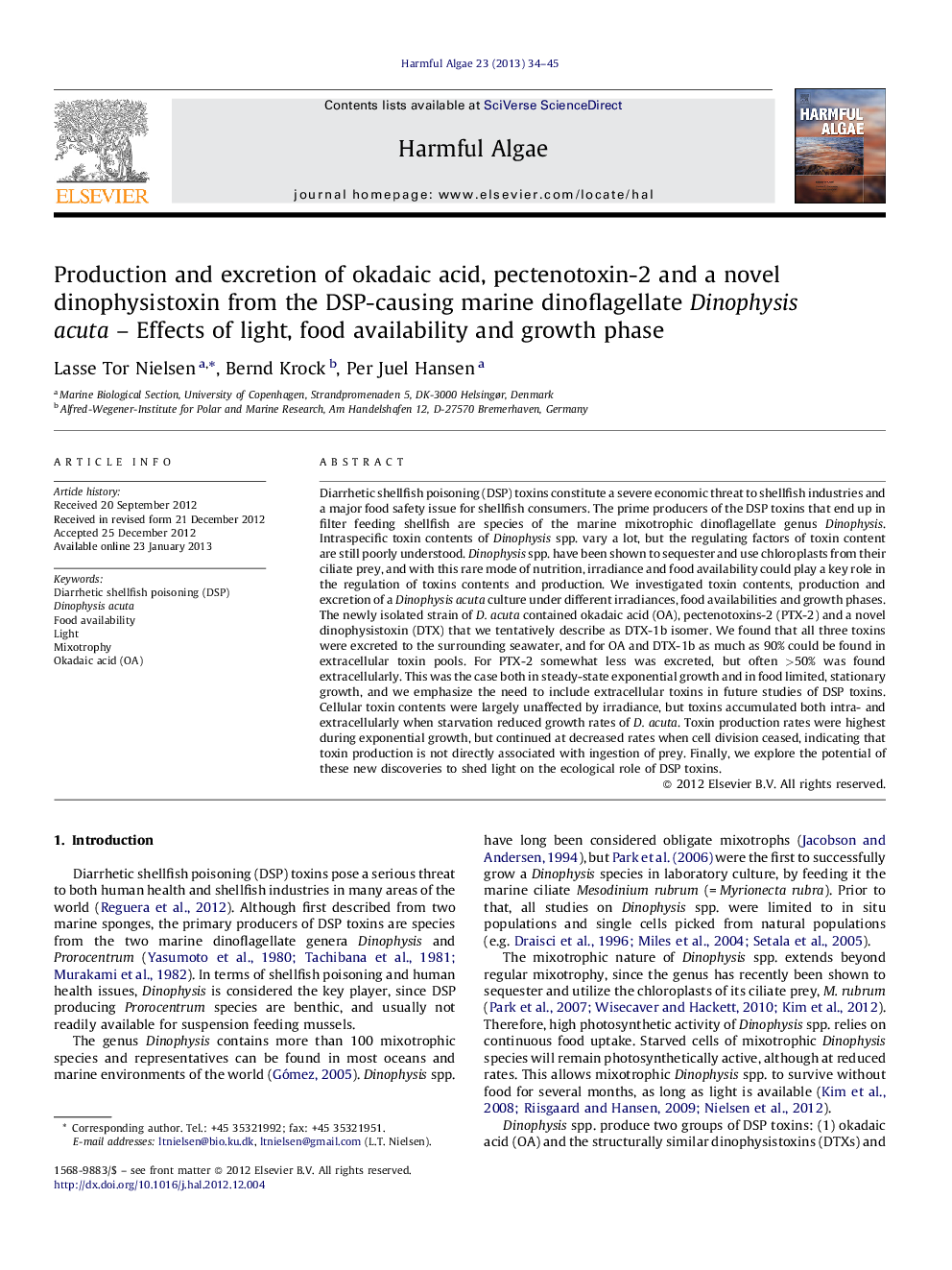| کد مقاله | کد نشریه | سال انتشار | مقاله انگلیسی | نسخه تمام متن |
|---|---|---|---|---|
| 4545465 | 1626948 | 2013 | 12 صفحه PDF | دانلود رایگان |

Diarrhetic shellfish poisoning (DSP) toxins constitute a severe economic threat to shellfish industries and a major food safety issue for shellfish consumers. The prime producers of the DSP toxins that end up in filter feeding shellfish are species of the marine mixotrophic dinoflagellate genus Dinophysis. Intraspecific toxin contents of Dinophysis spp. vary a lot, but the regulating factors of toxin content are still poorly understood. Dinophysis spp. have been shown to sequester and use chloroplasts from their ciliate prey, and with this rare mode of nutrition, irradiance and food availability could play a key role in the regulation of toxins contents and production. We investigated toxin contents, production and excretion of a Dinophysis acuta culture under different irradiances, food availabilities and growth phases. The newly isolated strain of D. acuta contained okadaic acid (OA), pectenotoxins-2 (PTX-2) and a novel dinophysistoxin (DTX) that we tentatively describe as DTX-1b isomer. We found that all three toxins were excreted to the surrounding seawater, and for OA and DTX-1b as much as 90% could be found in extracellular toxin pools. For PTX-2 somewhat less was excreted, but often >50% was found extracellularly. This was the case both in steady-state exponential growth and in food limited, stationary growth, and we emphasize the need to include extracellular toxins in future studies of DSP toxins. Cellular toxin contents were largely unaffected by irradiance, but toxins accumulated both intra- and extracellularly when starvation reduced growth rates of D. acuta. Toxin production rates were highest during exponential growth, but continued at decreased rates when cell division ceased, indicating that toxin production is not directly associated with ingestion of prey. Finally, we explore the potential of these new discoveries to shed light on the ecological role of DSP toxins.
► The Dinophysis acuta strain contained a novel isomer of dinophysistoxins-1 (DTX-1b).
► We show that DSP contents are unaffected by light.
► All three DSP toxins accumulate when growth of D. acuta is food limited.
► We show high amounts (<90%) of extracellular toxin – also in exponential growth.
► Results offer insights into the ecological role of DSP toxins.
Journal: Harmful Algae - Volume 23, March 2013, Pages 34–45